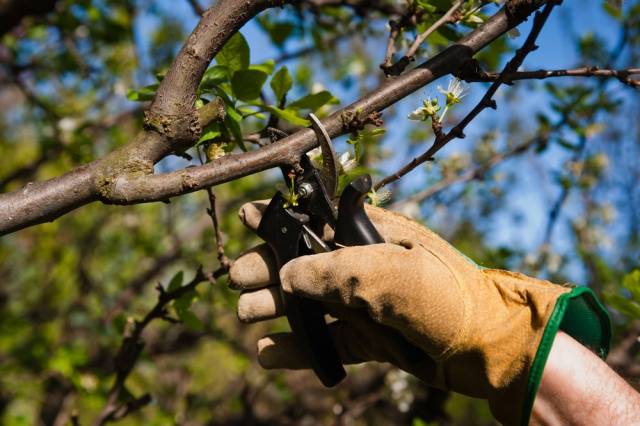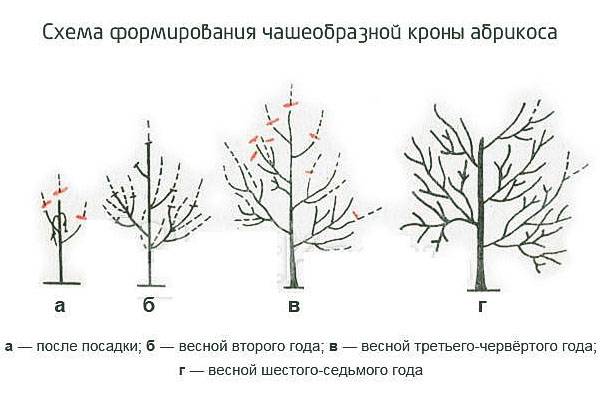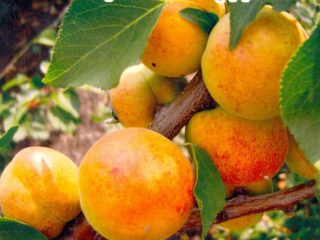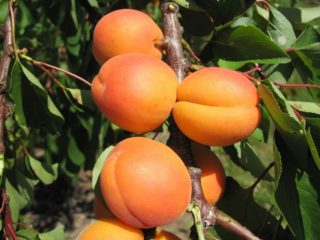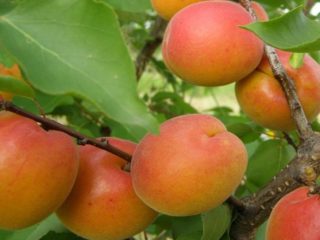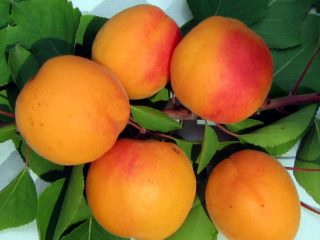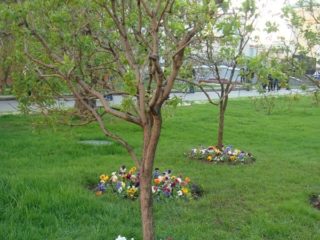Content
Pruning apricots is an important and beneficial procedure. It affects the condition of the tree as a whole and, ultimately, its yield, quantity and quality of fruit. A correct, timely pruning procedure allows you to form a beautiful crown, heal the plant and strengthen its immunity to diseases and pests.
Aims and objectives of pruning
Apricot pruning is a complex event that solves several problems. Its goals are as follows:
- The formation of the crown, without pruning, it will grow strongly.
- Without pruning, the inner branches of the apricot quickly age and die off.
- Irregular growth of shoots leads to the fact that the fruits become small. Pruning allows for a better crop.
- An abundance of apricots on an uncut tree can lead to numerous branch breakages under the weight of ripening fruits. Pruning normalizes yield.
In addition, it helps to rejuvenate and extend the overall life of the tree.
Views
There are several types of apricot pruning. They follow the tasks that are set for this event, and are as follows:
- sanitary;
- restorative;
- regulating (normalizing);
- wellness;
- anti-aging.
Each of these types serves a specific purpose.
Standardized pruning of apricot
Regulatory or regulating pruning is done to artificially limit yields. The apricot fertilizes all flowers, and without such a procedure, the tree will be depleted very quickly. The rationing of the crop allows it to maintain its strength, while increasing not only the mass and quality of fruits, but also the years of productive life.
Rejuvenating apricot pruning
This type of pruning is used for older trees. It allows you to stimulate the development of new shoots on which the crop will be formed. In fact, rejuvenating pruning gives the tree a second youth.
Formative pruning of apricot in spring
Formative pruning allows you to make the crown of the tree so that all the fruit branches have enough illumination. This is of great importance for culture. Usually, pruning and shaping the crown of an apricot is done in one of two types:
- sparse-tiered;
- tiered (cup-shaped).
It is necessary to form the desired crown configuration from the first year of planting an apricot. When the length of young shoots exceeds 0.4 m, you can start pruning.
The sparse-tiered method consists in forming a crown of 5–7 skeletal branches located at a distance of 30–40 cm from each other. Pruning is carried out as follows:
- In the first year, a quarter of the shoot is removed. In this case, you need to leave the two main branches at a distance of about 0.3 m from each other. The rest are removed under the ring. After that, the branches are trimmed so that their end is 0.3 m below the top of the whip.
- The next autumn, the same procedure is performed with other lateral shoots. In this case, the ends of the branches should be cut at a height of 0.4 m below the top of the main conductor.
- In subsequent years, this distance increases by another 15 cm.
- The branches that reappear on the central conductor are generatrices. Therefore, shoots over 0.6 m are cut in half; short ones do not need to be touched. The branch that has grown above the whip is left, the whip is cut out completely.
Weak side shoots with at least 10 leaves can be pinched until they take a horizontal position. Over time, they will also become part of the fruiting crown.
The flattened (cup-shaped) crown shape is used less often. In this case, 7 skeletal branches are left at a convenient distance. In this case, earlier fruiting occurs, but the quality of the crop deteriorates.
Sanitary
Sanitary pruning is done twice a season. The first time it is produced in early spring, before the beginning of the growing season. The second sanitary is done in the fall, after the leaves fall. During sanitary pruning, dried and broken branches are removed. At the same time, the shoots are examined for infection with fungal diseases, the affected areas are also removed.
When to prune an apricot: in spring or fall
The crop is pruned in both spring and autumn. In addition, there is also summer pruning, the so-called chasing.
Pruning apricot in spring
Spring pruning of apricots is done before the juices begin to move, usually from the end of March to the beginning of April. In addition to sanitary, formative and supporting is done.
Apricot pruning in spring, the scheme and procedure are presented in the video.
Video about pruning apricots in spring for beginners.
Summer apricot pruning
Summer apricot pruning is done in early June in order to rejuvenate the tree and increase the quality of the harvest. It consists of two stages:
- The branches of this year of life are shortened, leaving 20-30 cm.
- After 15–20 days, 2-3 strongest shoots are selected from the young growth formed, all others are cut out.
As you can see, there is no specific scheme for pruning apricots in the summer. It is produced once every 3-4 years and stimulates the tree to increase its yield.
How to prune an apricot in the fall
Apricot pruning in autumn is done in mid-October. At this time, broken and damaged parts of the crown are removed, and the imbalance between fruit and deciduous branches is corrected. The scheme for pruning an apricot in autumn is very simple: all fruit shoots, with the exception of skeletal ones, are cut by a third. Working with large branches is postponed until spring. Pruning apricots in the fall for beginners can only be reduced to sanitary.
Tools and materials
To work, you will need the following tools and materials:
- stepladder - for working on the upper tier of the crown;
- garden pruner - for thin shoots;
- lopper for larger branches;
- hand saw (hacksaw) - for thick trunks;
- garden knife - for cleaning and processing the cut;
- copper sulfate - for disinfection of the instrument and the wound surface;
- garden pitch - for final processing of the cut site.
Pruning apricots depending on the age of the trees
At different stages of the life of an apricot, it is pruned in different ways. Spring pruning of apricot in detail is presented below.
How to properly prune an apricot after planting
After planting, pruning and shaping of the first-year apricot is done as follows:
- If the seedling does not have side branches, then it is reduced to 80-90 cm.
- If there are lateral shoots, when pruning a young apricot, the most powerful are shortened exactly in half. The rest are cut into the ring.
- The main conductor is shortened so that it rises 30 cm above the rest of the branches.
Thickening (growing inside the crown) shoots are removed throughout the season.
How to properly prune a 2-year-old apricot
The main purpose of pruning 2 summer apricot seedlings in spring is to form new stem branches. To do this, do the following:
- Several branches are selected, located at a distance of 30 cm from each other and from the shoots of the last year. They are trimmed so that the upper ones are shorter than the lower ones.
- From the last branch growing to the side to the top of the conductor should be 40 cm.
- Some of the shoots of the current year on the skeletal branches are cut off. For fast-growing varieties, half is removed, for others - 1/3.
Shoots of the last year, which have already been pruned, are shortened a little.
How to prune an apricot 3 years after planting
The third year of life is the time of the formation of skeletal branches. During this period, the following pruning is carried out:
- The same is repeated as in the second year, while the whip is completely cut off.
- The overgrowing branches that come from the trunk, but are not skeletal, are cut off.
How to prune an apricot 4 years after planting
By the fourth year of life, the crown of the apricot should be fully formed. From this age, fruiting begins. For the next three years, only sanitary and health pruning will be required.
How to prune old apricots
Once every 3-4 years, an adult apricot will need anti-aging pruning. On old branches, fruiting completely stops by this time. The procedure is done as follows:
- From several skeletal branches, only 20-30 cm are left.
- If the fruits are tied only on the most distant shoots, all skeletal branches in the spring must be cleaned of overgrowth. By the summer, new fruit shoots will grow on them.
A video about pruning old apricots in spring is shown below.
How to prune a columnar apricot
The columnar apricot needs pruning. Otherwise, it will quickly lose its decorative effect. From the moment of landing, all activities will be aimed at the formation of a tiered straight crown. Pruning a columnar apricot is done like this:
- The seedling of the first year is shortened to 0.8–0.9 m from the ground.
- Lateral branches are cut off, leaving 3-4 shoots growing along the main trunk. They are cut so that they are 20-25 cm below the guide.
- All shoots that form on branches at an acute angle are removed in summer.
- In subsequent years, a column is formed, cutting off the main shoots.
After this, the annual shortening of the shoots by 15–20 cm. In addition, a sanitary cut is made, and the branches on which the fruits are not tied are removed.
Crop care after pruning
After the end of the work, all cuts must be processed with garden varnish without fail. You can purchase it from specialized stores or make your own. The easiest way is to take wine alcohol and mix it with fir resin and yellow wax heated over a fire (proportions 1: 10: 1). You can apply this var with a brush. Its viscosity is independent of temperature.
Instead of a garden varnish, you can use a varnish-based oil paint. Sometimes the slices are simply covered with clay. However, care must be taken to ensure that the rain does not wash away the putty before the wounds heal.
Watering, feeding and loosening the trunk circle will help to quickly restore strength after the pruning procedure.
Secrets of the correct pruning of apricots, or 8 useful tips for beginner gardeners.
- Do no harm. The first pruning should be done with an experienced assistant or have a good theoretical understanding of the issue.
- All is well in due time. Each event must be carried out on time, otherwise the tree may simply die.
- Less is better. Pruning too much can take a long time to recover.
- Cleanliness is the key to health.The instrument used for the operation must be disinfected with copper sulfate. They are also treated with wood cuts, then the wounds are covered with garden varnish.
- If you hurry, you will make people laugh. Take your time when pruning. All cuts and cuts must be done carefully, trying to inflict as little damage to the tree as possible.
- Seven times measure cut once. Accurate pruning is the key to a beautiful crown.
- Help the weak. Pruning a tree is very stressful. Do not forget to carry out recovery activities after pruning, feed and water the apricot.
- As it comes around, it will respond. If the procedures are done correctly and on time, the tree will generously thank you with a good harvest.
Conclusion
Apricot pruning is an important part of the agricultural work carried out with the crop. Without it, the tree will hurt, the yield will drop dramatically. Pruning is the key to the long life of an apricot, you should not neglect this procedure.
